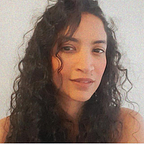Love, Monsters and Michael Matthews
After being catapulted onto the global stage, Director Michael Matthews found himself in his dream job: making movies for the world to see. He shares the journey to Love and Monsters.
We all love action-packed, cinema-filling blockbusters like Jurassic Park and E.T., but it’s rarely that you get to live the dream and make an all-out-crazy, off-kilter, genre-bending film with Paramount Studios at your back. This is Michael Matthew’s story.
After releasing Five Fingers For Marseilles and Apocalypse Now Now with Sean Drummond in 2017 — both to critical acclaim — he found his career going global. Michael was signed with an international talent agency, did the “water bottle tour” of Hollywood, and then the scripts began to roll in. But it was only when he laid eyes on Love and Monsters that he saw a story that really piqued his creative interest.
How did you land this sweet directing gig on the other side of the world?
After getting a Hollywood agent, I was sent a lot of scripts and came across this, originally called Monster Problems. It was quite out of my league at the time, a US$40 million movie. I managed to get on calls with the producers they liked the angle I pitched.
From there I spent two months putting a proper presentation together with a digital book like the book in the movie with drawings, the world, the creatures, the tone, etc. They then flew me over to pitch in person — and then weeks went by before I heard that I got it.
At that point Dylan O’Brien was attached, and the project had a blinking green light. After some challenges we had to work quite intensely with the line producers and execs to reduce the budget to US $30 million and get it greenlit.
How does shooting in Australia compare to South Africa?
The conversation for the execs was always about shooting between New Zealand and Australia. I actually suggested SA but the gist of it, I felt, is that so much of it rides on the rebate and SA is perhaps not as efficient or clean as some of these other countries.
But the shooting process was really rewarding and fun. Working with Dylan O’Brien, we added a lot more comedy to it as we went along. He is super intelligent and brought so much as an actor who had more to offer than I could. I almost had to help give him the space to elevate the movie.
Congrats on the Oscar VFX nomination! What was it like working with the VFX team, the creativity of putting these monsters together, etc.?
The nomination was a surprise by itself — so that was great. The visual or crafting side of filmmaking is probably my favourite. I get joy from the sound and music and creativity.
It was really fun being in a space where we had the resources to do cool things. It started working with Production Designer Dan Hennah and building awesome sets with bunkers and props. Then working with top concept artists to create the creatures was done pretty much before we shot. This was about 80 or 90% accurate to the end movie. I based a lot of it off real creatures, textures, mixing and matching, etc.
We tried to do quite a bit practically but this wasn’t really possible with the bigger creatures. One of these was Mavis, the robot, where there was a person puppeteering her arms and head.
We spent about 6 months in post with the VFX team from Mr X, but for some scenes, I had to select shots 3 weeks into the shoot before we even got to the edit room so they could just get working. Some of these I only saw weeks before the film was finished.
What were some of your favourite moments on production?
There was a moment just before we started shooting when I saw the five big sound stages at the studios. In one there were props like huge eggs being built, in another, there was a bunker being built, and each one was filled with things we were making. That was very exciting and real.
Then also probably the test screenings with about 300 people during the online process. It’s never fully mixed and the score’s not there, but there was a moment when at least 70% of the VFX was in and it had such a good reaction and got really good scores. It felt like we made it.
Watch Love and Monsters on www.netflix.com. This article first appeared in Callsheet Africa Issue 02, 2021.
